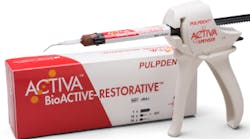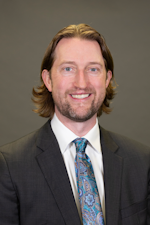Since its debut in 2013, Pulpdent's Activa Bioactive has seen steady adoption increases among US and international dentists. We've followed the story of the groundbreaking product via interviews and updates, but we wanted to check back at the six-year mark to see what was new.
In this interview with Pulpdent's Fred Berk, we ask about the challenges that Activa Bioactive has faced, its successes, as well as what's on the horizon for bioactive products.
Interview with Pulpdent's Fred Berk
Activa Bioactive has been on the market for six years. In that time, what new information have you learned about the product?
We have learned a great deal from clinicians, patients, and the research community. Clinicians want to provide their patients with the best possible care, and they understand intuitively that using bioactive materials that stimulate the natural remineralization process is a better model than the traditional repair or “drill and fill” approach.
We have learned that easy-to-use, technology-driven materials inspire clinicians, increase efficiency, and deliver better patient outcomes. The difference between traditional composites and Activa composite material is palpable to dentists. They immediately observe that Activa wants to become part of the tooth. They know that teeth are made of calcium and phosphate, and that providing these minerals is beneficial and plays both a restorative and preventive role. They also note the marvelous condition of the soft tissues that are in contact with Activa.
Clinicians tell us that this is what they have been waiting for, so we have learned that the bioactive revolution has tremendous support amongst practitioners.
The research community is fascinated by Activa and seeks, as we do, to understand it better. They see a durable material that is more fracture-resistant than traditional composites. We know this is due to the rubberized-resin molecule in the Activa resin matrix. They report that biofilm does not attach as strongly to Activa and is more easily removed than with traditional composites. The diffusion of ions passes through universal bonding agents and is capable of stimulating mineral formation at the material-tooth interface in the presence of saliva or a saliva substitute. Perhaps the most interesting finding is that Activa inhibits dentinal endogenous proteases (MMPs) and the process that degrades the adhesive hybrid layer and dentin-resin interface. That means it helps prevent the breakdown of the bonding agent and hybrid layer that leads to microleakage, brown lines and restoration failure.
Every new technology has to overcome challenges in the marketplace. What is the biggest challenge Activa Bioactive has faced, and how have you overcome it?
We introduced a new idea. Traditional composites are hydrophobic and are designed to be passive and do no harm. Bioactive materials are moisture friendly and are designed to play a dynamic role in the mouth. So the first challenge was in offering a new approach to restorative materials and providing the rationale and education to support this approach based on years of independent testing and evaluation by universities and research groups.
There are also numerous variables that can have an impact on a restorative procedure. We learned about these by speaking with dentists and understanding the challenges they face. We have made clarifications in our instructions and offered many procedure guides, helpful hints, clinical and scientific articles, videos, blog postings, and other educational materials so that every dentist can be successful.
Is Pulpdent looking to expand its line of bioactive products?
Yes. We will introduce many new bioactive materials in the foreseeable future. Some of these are restorative resins based on new, patented technologies that allow for a single component, light-cure material with bioavailable calcium and phosphate.
Dental professionals are committed to their patients and the prevention of dental disease. We believe that dentists will increasingly use bioactive materials that help neutralize oral pH, deliver essential minerals, and stimulate the natural mineralization process. These materials may also encourage beneficial bacteria to flourish while discouraging the adhesion of biofilm and the progression of tooth decay and periodontal disease. This is our vision for the future of dentistry, and it is where we are heading with our research and product development.
Related:
Activa Bioactive: The story behind Pulpdent's breakthrough bioactive restorative









